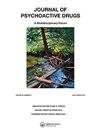Building Capacity for Injectable Diacetylmorphine and Hydromorphone for the Treatment of Opioid Use Disorder: Identifying Typical Doses.
IF 2.1
4区 医学
Q2 PSYCHOLOGY, CLINICAL
引用次数: 0
Abstract
Identifying typical doses of existing opioid use disorder medications, such as injectable opioid agonist treatment (iOAT), can support client and program needs, and potentially increase iOAT expansion. Longitudinal data from participants in a cohort study (n = 131), along with clinic dispensation records from August 2014 to April 2020, were used to examine physician prescribed as well as used doses of injectable diacetylmorphine and hydromorphone. Dosage groups, by medication and prescribed dose per session, were created for both hydromorphone and diacetylmorphine. A total of 534, 522 injections were registered during the study period among 129 participants. Mean received diacetylmorphine doses ranged from 106 to 989 mg per day, with most clients using 125-262 mg per session (mean 192.99 mg) and attending 2.40 sessions per day. Mean received hydromorphone doses ranged from 51.09 to 696.06 mg per day, with the majority using 88-154 mg per session (mean 121.32 mg; 2.43 sessions). Average daily doses remained stable overtime and, while mid-range doses were most typical, participants used the whole spectrum of allowable dose prescriptions. Evidence supporting typical doses of iOAT can be integrated into program planning to better allow providers and prescribers to anticipate program needs and engage in individualized care.建设注射用二乙酰吗啡和氢吗啡酮治疗阿片类药物使用障碍的能力:确定典型剂量。
确定现有阿片类药物使用障碍药物(如注射用阿片类激动剂治疗(iOAT))的典型剂量可以支持客户和项目需求,并有可能扩大 iOAT 的使用范围。我们利用一项队列研究参与者(n = 131)的纵向数据以及 2014 年 8 月至 2020 年 4 月的门诊配药记录,检查了医生开具的注射用双乙酰吗啡和氢吗啡酮的剂量以及使用剂量。按照药物和每次治疗的处方剂量,为氢吗啡酮和双乙酰吗啡创建了剂量组。在研究期间,129 名参与者共进行了 534,522 次注射。每天收到的双乙酰吗啡平均剂量从 106 毫克到 989 毫克不等,大多数客户每次使用 125-262 毫克(平均 192.99 毫克),每天参加 2.40 次治疗。每天接受的氢吗啡酮平均剂量从 51.09 毫克到 696.06 毫克不等,大多数人每次使用 88-154 毫克(平均 121.32 毫克;2.43 次)。日均剂量在一段时间内保持稳定,虽然中端剂量最为典型,但参与者使用了所有允许剂量处方。可以将支持 iOAT 典型剂量的证据纳入项目规划,以便更好地让提供者和处方者预测项目需求并参与个性化护理。
本文章由计算机程序翻译,如有差异,请以英文原文为准。
求助全文
约1分钟内获得全文
求助全文

 求助内容:
求助内容: 应助结果提醒方式:
应助结果提醒方式:


